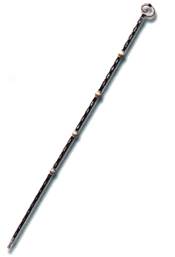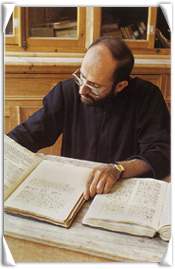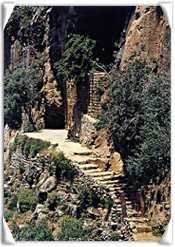Home
Previous Next
WHAT TO SEE IN QOZHAYA
PAGE 2
d) The Printing Press
The press is the first one in the Middle East. Some historians dated its installation at the Monastery to 1584. The first printed text that we possess is The Book of Psalms, which can actually be found at the Library of the University of the Holy Spirit at Kaslik. It dates back to 1610. The printing press has Syriac characters. Several liturgical and religious books have been printed in the Monastery: the Mass Book, the Book of the Epistles, the Breviary and the Martyrology have been printed in both Syriac and Karshouni.The Lebanese Maronite Order renovated the printing press at the start of the nineteenth century. They reserved for it a place known, to this day, as "Maarama".
The activities of the press were brought to a hall at the start of the 1860 war. It restarted printing in 1871 and stopped at the beginning of World War II.
e) The Scepter
The Scepter is encrusted with diamonds and ivory. It was presented to the Monastery by King Louis IX of France.
f) The Museum
Religious and cultual objects and vestments, some of which are gifts from kings and heads of state, are preserved in the Monastery's museum. There are also clay utensils and ancient agricultural tools.
g) The Library
The library houses the Monastery's archives of Arabic and Syriac manuscripts as well as a large number of printed texts.
THE MONASTERY'S ESTATES AND SURROUNDINGS
a) The Monastery of Our Lady of Hawqa
This Monastery was founded in 745 on the slopes of the valley of Qannoubin and it was restored in 1283. It had been the first Maronite school in 1624.
b) The Cave of Youssef Bey Karam
This cave is in a high slope northwest of the Monastery. It bears the name of Youssef Bey Karam, a XIX century Lebanese hero, who found refuge there during the insurrection he led against Moutassarref Daoud Pasha for the freedom of Lebanon.
c) Madinat Er-Rass
It is situated above the cell of Saint Boula. It lies on the peak of the mountain, which overlooks the sea, the Koura plain, the Batroun region and the Aakkar plain. Its vestiges date back to Roman times.
Previous Next
Top




